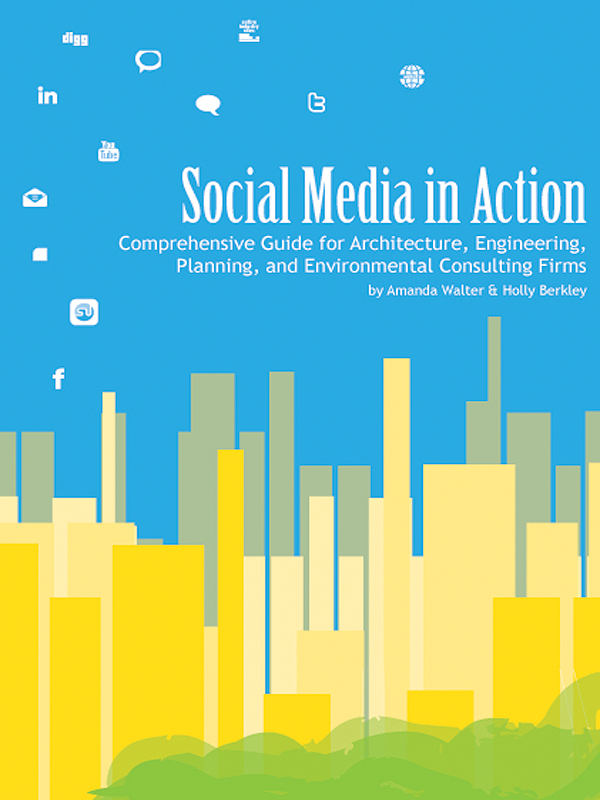This article was originally posted on the Knowledge Architecture Blog.
It’s not uncommon for architecture and engineering firms to assign the goal of “creating a social media presence” to the marketing or communications departments and expect to see great results. When social media is all about sharing and presenting an authentic voice, a centralized approach for an intellectual and technical crowd could be looked at as an obstacle. But, you have to engage. Luckily, you are sitting on a wealth of ideas, knowledge and sources — you only need to look inside your firm. Here are seven internal communications tips to tune up what will be the engine of your external social media program.
1. Find a multi-directional communications tool to use internally.
If your firm uses an internal blog, SharePoint, or other internal social tools, your foundation is already in place. If not, talk to your IT staff about setting up a WordPress or similar free-blog tool behind your firewall. These tools let you post messages and queries to employees and interact with those who comment. Ideally, these tools should allow other employees to initiate conversations and ask questions too. It’s important for this to be a democratic space because, equally important to your role as content contributor; you’ll also need to be an active listener.
2. Survey your staff.
Some of these internal social tools will have a survey function built in. If yours doesn’t, tools like Survey Monkey make it really easy (and free if you keep it short) to survey and monitor results quickly. Get a sense for how many employees have accounts on the primary social networks like LinkedIn, Facebook and Twitter and how often they use these. Is anyone blogging regularly? How do they use these networks?
This information can not only help you identify colleagues who are interested in, or even knowledgeable about, social media (perhaps they could be the initial members of an internal social media community), but these statistics could also be a valuable benchmark for future surveys or data to track your success.
Report the findings and your assessment back to employees and ask for their analysis of the results.
3. Advertise your social media efforts.
Tell everyone about the firm’s new accounts. Ask them to “like”, “follow”, subscribe or join the company pages and accounts – and ask them to refer their industry friends/contacts to the accounts as well.
Make your program objectives clear and include information on how they can participate. (These could be informal or formalized guidelines). Use other internal vehicles, like printed posters hung in common areas or an email blast to promote awareness of the social media program and invite them to participate in the “behind the scenes” efforts that go into creating external marketing content.
Publish hyperlinked headlines and subheads of new external blog posts internally to encourage people to read, comment and forward on blog posts. Share external social media accomplishments with the group. Pass along complements to your contributors through these visible internal channels “Jane Doe’s opinion blog post was picked up by three widely read blogs, drew six thoughtful comments and we saw a 66% spike in blog traffic.”
4. Ask for input.
Let staff know what topics you are researching for future external blog posts and ask your readers specific questions to help you develop these, i.e. “Does anyone know a source for this type of research?” or “Have we used this technology on any of our projects?” You could also make an editorial calendar that sets some preliminary dates for when you’ll be blogging on a particular topic and allows staff to submit projects or ideas to you in advance.
5. Find the low-hanging fruit.
Keep your eyes and ears open for internal mentions of material that could be repurposed. This could be presentations that have been given at events or conferences, articles or whitepapers that an employee has written, general research that was conducted for a project or even popular internal conversation threads. With a little work these can be broken down into singular ideas and repurposed as blog posts, or cleaned up and made available on iTunes or the firm’s YouTube channel and then promoted through Twitter, Facebook or LinkedIn.
6. Identify knowledge centers and groups.
In most firms’ intranets, subgroups are popular activity centers. Collectively these can be a wealth of information and ideas. These very focused units can bring a diversity of scale to your social media content. Big lofty idea posts are great for showcasing big picture visions, but a smattering of focused stories, like how a 3-D visualization helped community members understand and support the proposal for a new development, can show the care taken at each phase of a project.
7. Reach out to active voices.
Take stock in the people who are most comfortable engaging internally and the topics they gravitate toward. These could be subject-matter experts with knowledge to share or simply people who are comfortable sharing feedback and extending conversations in social forums. Contact these people individually to consider ways they could be helpful outside the firewall as well. Encourage them to contribute a blog post, submit a comment, man the Twitter account or even just forward interesting data and articles that are worthy of tweeting or posting.
There is a component of ego in the design professions. Tap into this by aiming the spotlight on individuals or their work can pay off in their loyalty and interest in helping you the next time around.
After all, the culture of social media is about engaging and sharing. It only makes sense to start with your own community of employees. By leveraging internal communications tools to grow your network of resources and ideas, the social media program you create makes the most of the ambitious and authentic personalities within.
 2012 National Design Winners. The Smithsonian's Cooper-Hewitt has announced winners of the 13th annual National Design Awards, a program established to promote excellence and innovation in design.
2012 National Design Award recipients:
2012 National Design Winners. The Smithsonian's Cooper-Hewitt has announced winners of the 13th annual National Design Awards, a program established to promote excellence and innovation in design.
2012 National Design Award recipients:

